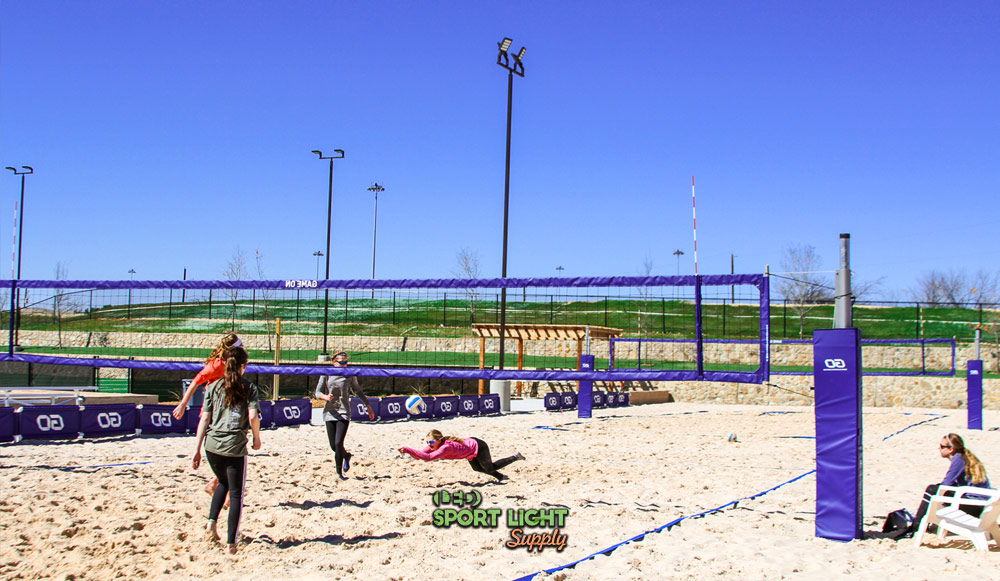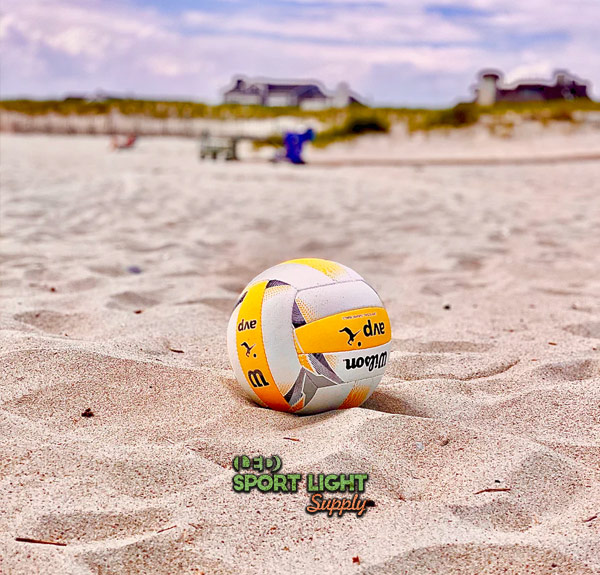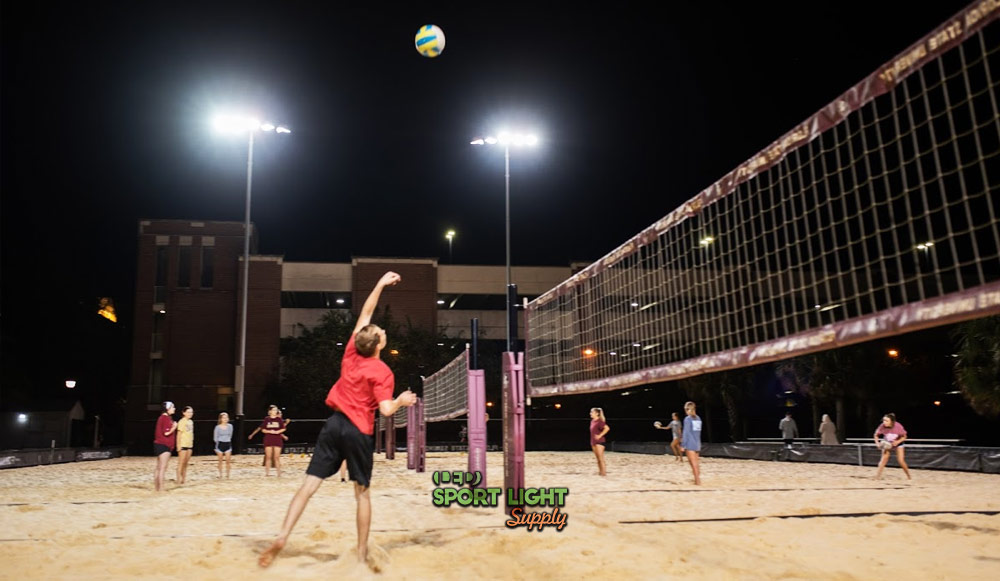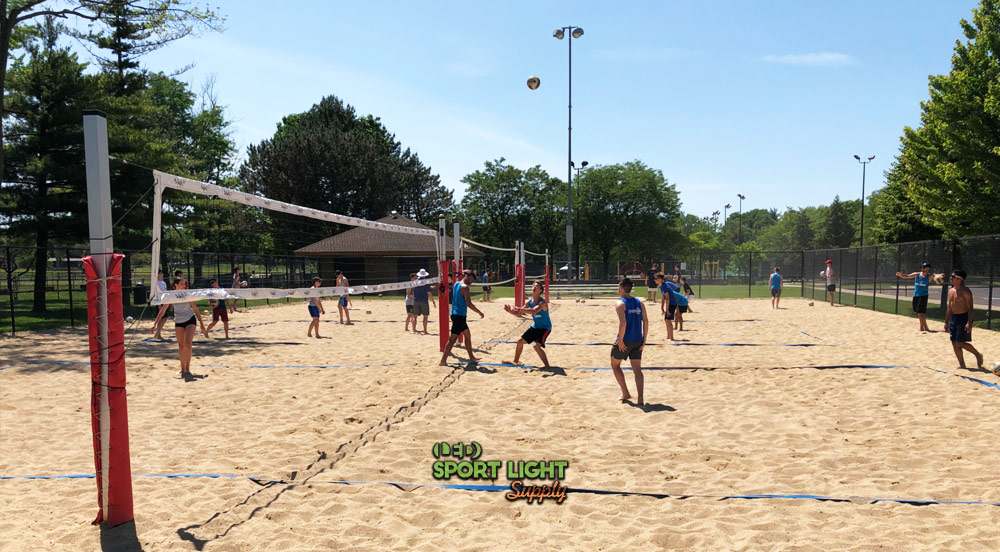Table of Contents
ToggleConsiderations for Installing Light Poles on Sand Volleyball Courts
For a standard sand volleyball court measuring 29.6 × 59.1 feet (9 × 18 meters), the number of high masts required can range from one to four. Before beginning excavation, a well-planned light pole layout is essential. This process starts with a lighting designer calculating the appropriate height for the light poles.
The depth at which to install these poles is determined after this initial calculation. However, prior to preparing the site, it is crucial for the professional to check for any underground utilities.

Typically, light poles for sand volleyball courts are installed at depths ranging from 2 to 3 feet. If drainage conditions are not ideal, the poles should be placed at a depth of 3 feet. In contrast, with compact soil and good drainage, a depth of 2 feet may suffice.
Several factors influence the depth of installation. The height of the masts is particularly important, as the top of the light pole should be at least 1 to 2 feet higher than the volleyball net. If solar panels are to be installed on top of the poles, it may be necessary to use taller masts, which could require placing the concrete footing deeper into the ground.
It is also important to ensure that the light pole height does not come too close to the net height to avoid glare. For instance, lighting fixtures positioned at head level could interfere with players’ visibility, especially when attempting to spike the ball near the centerline.
Factors Affecting the Depth of Sand Volleyball Court Light Poles

Type of Sand Used in the Volleyball Court
When you step onto a professional beach volleyball court, you’ll notice the sand is of high quality. This sand is typically sourced from deep in the mountains, meticulously screened for impurities such as rock flakes and pebbles, which can injure players. The court is constructed with a gravel layer beneath the sand to provide a stable foundation.
In contrast, construction sand or sand from golf bunkers is not suitable for volleyball courts. High-quality volleyball sand is usually rounded and polished, often from freshwater rivers, though natural beach sand can also be used in some locations. If high-quality sand is used, it might influence the depth at which the light poles are installed. For example, if natural beach sand is used, a drainage pipe may be needed around the light pole installation area. This ensures that the concrete base remains stable and prevents tilting.
Light Pole Height

The height of the light poles is a crucial factor influencing their installation depth. In areas prone to strong winds, deeper installation may be required for stability. For example, if the light pole height is 10 feet, it may need to be anchored up to 5 feet into the sand. Alternatively, using multiple layers such as gravel, masonry sand, and artificial turf can provide additional stability.
The height of the light pole also impacts the lighting requirements. For professional beach volleyball, the pole height typically exceeds 7 feet 11 inches to achieve the required 500 lux level. High-quality, flicker-free LED fixtures are necessary to meet the lighting standards for broadcasters and spectators. The design may also need to accommodate technical standards, such as using a single high mast with circularly oriented projectors for indoor sand volleyball courts to light up multiple pitches simultaneously.
Building Foundations

The stability of the building’s foundation can significantly impact the depth required for installing light poles. An analysis of the soil characteristics at the construction site is essential to determine the appropriate foundation type. The age and condition of the sand volleyball court’s foundation will also affect the installation process. Older courts might require additional testing or minimal construction work to ensure safety and stability.
Commercial outdoor sand volleyball centers, especially those hosting events or competitions, must adhere to specific regulations. Proper consultation with experts and conducting a thorough survey of the building foundations can help ensure that the light poles are installed securely and meet all safety standards.
Importance of Adequate Depth for Sand Volleyball Light Poles
Ensuring that a sand volleyball light pole is installed at the correct depth is crucial for several reasons, particularly due to the potential impact of adverse weather conditions and environmental factors. Proper depth helps mitigate various risks and ensures the stability and safety of the light poles.
Weather-Related Risks
Typhoons
Typhoons and strong storms can exert significant force on light poles. If a light pole is not installed deeply enough, it may be vulnerable to tipping over or swaying, which could lead to damage or accidents.
Hot Temperatures
Extreme heat can affect the stability of the soil around the light pole. Without sufficient depth, the pole may become unstable due to soil expansion or contraction caused by high temperatures.
Environmental Factors
Stability Issues
The stability of the light pole is directly influenced by its depth. Insufficient depth can lead to instability, making the pole more susceptible to leaning or falling, especially under heavy loads or impact.
Landslides and Subsidence
In coastal or beachside locations, landslides and subsidence can occur, especially if the soil is not well-compacted or if there are significant changes in the landscape. Adequate depth helps anchor the light pole securely, reducing the risk of it being displaced by such events.
Tidal Waves
For light poles situated near the shoreline, tidal waves can erode the soil around the installation site. Proper depth ensures that the pole remains anchored even in the event of high tidal activity or erosion.
Ensuring Safety
A well-installed light pole at the correct depth is crucial not only for the stability of the pole but also for the safety of the volleyball players, coaches, and spectators. Proper depth helps prevent accidents caused by the pole falling or leaning, ensuring that the lighting system remains secure and effective throughout its use.
Conclusion
Ensuring that sand volleyball light poles are installed at an adequate depth is essential for maintaining their stability and safety. By addressing potential weather-related risks and environmental factors such as typhoons, heat, landslides, and tidal waves, proper depth helps prevent accidents and ensures the long-term effectiveness of the lighting system. A securely anchored light pole contributes to a safer and more reliable environment for players, coaches, and spectators, enhancing the overall experience at the volleyball court.
